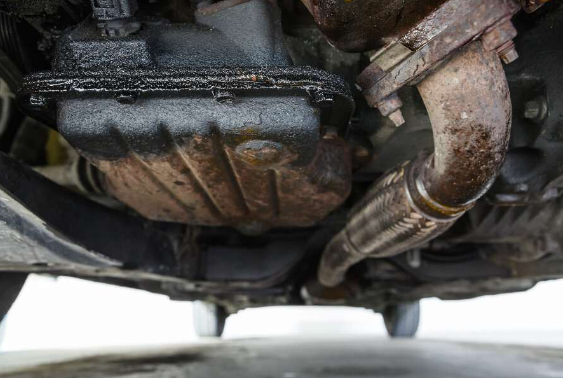Introduction to Oil Leaks in Cars
Every car owner dreads the thought of an oil leak in car after oil change. It’s messy and concerning and can lead to serious engine issues if not addressed promptly. After getting an oil change, finding a puddle of oil underneath your vehicle can be particularly alarming. What went wrong? Did someone overlook a crucial step during the service? Or is there something more sinister at play?
Identifying an oil leak in your car after an oil change isn’t just about keeping your driveway clean; it’s vital for maintaining the health of your engine. Understanding how to spot these leaks early can save you from costly repairs down the road and ensure that your vehicle runs smoothly.
Let’s examine what causes these leaks, how to recognize them, and what steps you should take if you encounter this frustrating situation.
Common Causes of Oil Leaks After an Oil Change
Oil leak in car after oil change can stem from several common issues. One frequent culprit is a damaged or improperly installed oil filter. If the seal isn’t tight, it can lead to significant leakage.
Another possibility is a loose drain plug. If this component isn’t secured correctly during the oil change process, it may allow oil to escape.
Worn gaskets or seals are also major contributors. Over time, these parts degrade and lose their ability to contain fluids effectively.
Using the wrong type of oil can affect engine performance and promote leaks. Always ensure you’re using manufacturer-recommended oils for optimal vehicle health.
Signs and Symptoms of an Oil Leak
Detecting an oil leak in your car is crucial for maintaining its health. One of the most telling signs is a dark puddle or spot underneath your vehicle, especially after it has been parked for a while.
Another indicator is the smell of burning oil. If you notice this odour, it could mean that oil is leaking onto hot engine parts, creating smoke and potentially leading to more severe issues.
Pay attention to the dashboard warning lights as well. Low oil pressure or other engine-related alerts may appear when there’s insufficient oil due to leaks.
Also, keep an eye on your engine’s performance. A drop in power or unusual noises can be linked back to inadequate lubrication caused by an oil leak. Regular checks can help catch these symptoms early before they escalate into bigger problems.
Steps to Identify an Oil Leak
Start by inspecting the ground where you park your car. Look for dark, oily spots or puddles that indicate a leak.
Next, check the oil filter. Ensure it’s adequately tightened and hasn’t been damaged during installation. A loose or faulty filter often leads to leaks.
Examine the oil pan as well. Look for any signs of cracks or wear around its edges.
Don’t forget to inspect gaskets and seals under the hood. These components can degrade over time, leading to potential leaks after an oil change.
If you’re comfortable with it, inspect your engine’s underside while it’s running. This may help pinpoint any active leaks not visible from above.
If these steps don’t reveal anything obvious, consider using UV dye in your oil; this can help trace even small leaks effectively.
How to Fix an Oil Leak
Depending on the severity and location, fixing an oil leak can be straightforward. Start by cleaning the affected area with a degreaser to eliminate old oil residue. This helps accurately identify where the leak is originating.
If it’s a loose drain plug or filter, tighten them securely. Sometimes, replacing worn seals or gaskets is necessary. For minor leaks, applying an oil-stop leak product may provide a temporary fix.
Consider consulting a professional mechanic in more complex cases like cracked engine components or damaged hoses. They can offer detailed diagnostics and repairs that might go beyond basic fixes.
Always keep an eye on your oil levels after any repair to ensure that the issue has been resolved effectively. Regular maintenance checks are also crucial in preventing future leaks from developing again.
Preventing Future Oil Leaks
Preventing future oil leaks is crucial for maintaining your vehicle’s health. Regular maintenance practices can make a significant difference. Start by checking your oil levels frequently and topping off as needed.
Ensure that the oil filter and drain plug are properly tightened after every oil change. Loose components can lead to potential leaks over time.
Inspect gaskets and seals regularly, as they can wear down or become brittle due to heat exposure. Replacing them before they fail will give you peace of mind.
Using high-quality oil can also help reduce leaks, as it often contains additives designed to better protect engine components.
Consider regular professional inspections. Mechanics have an eye for early signs of trouble that might escape your notice. Taking these proactive steps enhances your car’s longevity while keeping those pesky drips at bay.
Conclusion
Identifying oil leak in car after oil change can be daunting, but it’s crucial for maintaining vehicle health. Regular inspections and being aware of the signs will help you catch any issues early on. Remember to check your oil levels frequently, keep an eye out for unusual spots under your car, and address any symptoms promptly.
If you discover a leak, assess its cause carefully before attempting repairs. Whether it’s something simple like a loose drain plug or more complex like a gasket failure, knowing how to approach the problem will save you time and money in the long run.
Preventative measures are just as crucial as identifying leaks when they happen. Regular maintenance checks and using quality products can help keep your engine healthy.
Stay vigilant with your vehicle’s performance; doing so ensures you’re driving safely while avoiding potential damage from oil leaks that could lead to costly repairs down the road. Taking these steps protects your investment and enhances safety on the road.




